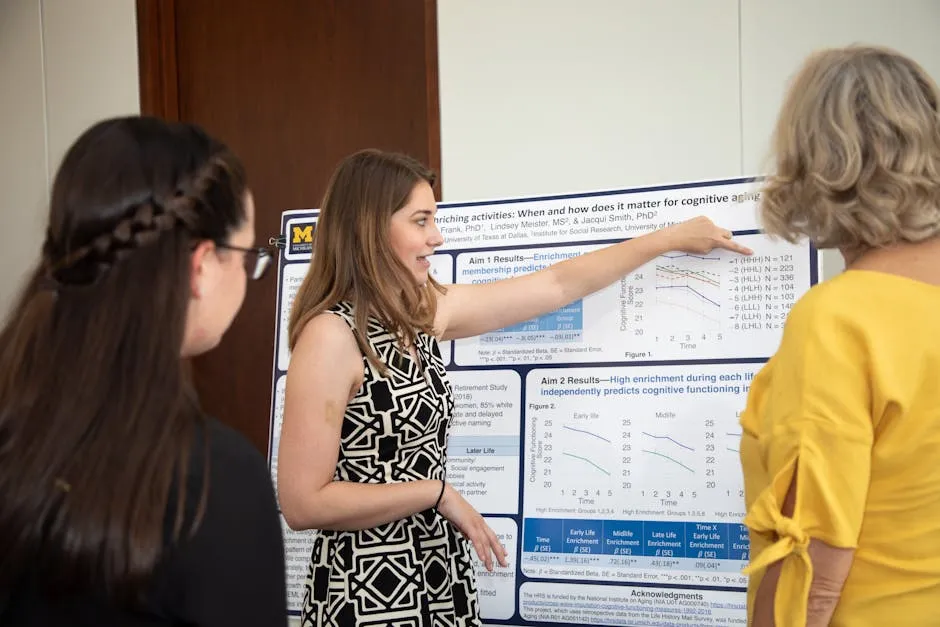Introduction
Statistical inference is the backbone of data science. It’s how we make sense of the mountains of data around us, transforming numbers into actionable insights. In Colorado, where tech innovation thrives, understanding statistical inference is crucial. It equips data scientists with the tools to analyze trends, make predictions, and inform decisions across various sectors.
The University of Colorado Boulder stands out in this arena. Offering a robust curriculum in data science, it emphasizes statistical inference for estimation. This program prepares students to tackle real-world data challenges, blending theory with practical application.
This article aims to provide a comprehensive understanding of statistical inference for estimation. We’ll cover course offerings, methodologies, and practical applications specific to Colorado. Whether you’re a prospective student or a curious mind, this guide will illuminate the importance of statistical inference in today’s data-driven landscape.

1. Understanding Statistical Inference
1.1 Definition and Importance
Statistical inference refers to the process of drawing conclusions about a population based on a sample. It plays a vital role in data science by enabling analysts to make predictions and decisions grounded in data. Imagine trying to make a guess about the weather, but only having data from a single day. That’s where statistical inference shines; it helps us generalize findings from small samples to larger populations.
Estimation is particularly significant in analyzing data. It allows us to create models that predict outcomes, assess risks, and identify trends. For instance, businesses utilize estimation techniques to forecast sales and optimize inventory. This capability is indispensable for effective decision-making.
If you want to dive deeper into the art of estimation and statistical inference, consider grabbing a copy of Statistical Inference: A Short Course on Statistics. It’s a fantastic resource that will equip you with the necessary tools to tackle real-world data challenges.
1.2 Key Concepts in Statistical Inference
Several key concepts underpin statistical inference. First, there’s the population, which represents the entire group of interest. In contrast, a sample is a subset of that population, selected for analysis. The goal is to use the information gathered from the sample to make inferences about the population.
Next, we have parameters and statistics. Parameters are numerical characteristics of a population, while statistics are numerical characteristics derived from a sample. Understanding the difference is crucial for effective analysis.
Another essential idea is sampling distributions, which describe the distribution of a statistic across different samples. Sampling distributions are vital for assessing the reliability of an estimator. They help us understand the variability of our estimates and ensure robust conclusions.
If you’re looking to enhance your understanding of statistical concepts, consider Data Science for Dummies. It’s an excellent starting point for those who want a friendly introduction to the field.
In summary, grasping these concepts is fundamental for anyone looking to excel in data science. They provide the foundation for making informed decisions based on data analysis.

1.3 Applications in Data Science
Statistical inference is like a magician pulling rabbits from hats, but in this case, the rabbits are useful insights from data! Let’s take a look at how this magic is applied across different fields.
In healthcare, statistical inference helps in predicting patient outcomes. For example, researchers use it to estimate the effectiveness of new drugs. They analyze data from clinical trials to make informed decisions about treatments. This means better patient care and more successful therapies. It’s all about turning raw data into lifesaving solutions.
Moving to finance, statistical inference is crucial for risk management. Financial analysts use it to estimate potential losses. By analyzing historical data, they can predict market trends and make informed investment decisions. It’s like having a crystal ball, but grounded in data! This helps investors minimize risks while maximizing returns.
A great resource to enhance your financial analysis skills is Python for Data Analysis. This book walks you through the essentials of using Python for data analysis and manipulation.
Marketing professionals are no strangers to the power of statistical inference either. They analyze customer behavior data to infer preferences and trends. By understanding what customers want, businesses can tailor their strategies accordingly. This might include targeted advertising campaigns or personalized recommendations. Ultimately, it leads to increased customer satisfaction and loyalty.
In sports analytics, teams rely on statistical inference to evaluate player performance. Coaches analyze player statistics to make strategic decisions during games. This can mean the difference between winning and losing. It’s a game of numbers that directly impacts the scoreboard!
Lastly, in environmental science, statistical inference aids in understanding climate change. Scientists analyze data from various sources to infer patterns and predict future changes. This information is vital for creating policies aimed at protecting our planet.
For those interested in the intersection of data science and environmental studies, check out Data Science for Environmental Science. It provides insights into how data science can be applied to environmental issues.
In summary, statistical inference is a powerful tool across diverse fields. It transforms data into actionable insights, enhancing decision-making processes and driving innovation. Whether in healthcare, finance, marketing, sports, or environmental science, the applications are vast and impactful. Embracing statistical inference means embracing a future grounded in data-driven decisions!

For a deeper understanding of statistical learning, check out The Art of Statistics: Learning from Data.
2.3 Course Details
To embark on the adventure of statistical inference for estimation in data science, a few essentials are in order. First up, prerequisites! Students should have a solid grasp of calculus up through Calculus II, preferably with some multivariate calculus sprinkled in. A smidge of programming experience in R will also serve you well, as it’s a common tool used throughout the course.
The course duration is approximately 26 hours, but no need to rush! It’s designed to fit your schedule like a glove. Yes, you heard that right—flexible learning options are available. Whether you’re a night owl or an early bird, you can learn at your own pace.

Assessment methods include 12 quizzes that will keep your brain on its toes and help solidify your understanding. Completing these quizzes is like leveling up in a video game; each one brings you closer to mastering the art of estimation.
So, if you’re ready to dive into the world of statistical inference with a flexible schedule and a supportive environment, this course is your ticket to success! Get ready to sharpen those statistical tools and unlock new skills that will propel you into the data science realm. If you want to get a head start, consider R for Data Science: Import, Tidy, Transform, Visualize, and Model Data. This book is a great resource for anyone looking to master data science using R.
3.3 Advanced Topics
When discussing statistical inference for estimation, two advanced concepts often come into play: asymptotic properties and non-normal distributions. Understanding these ideas is crucial for refining estimation techniques, especially in the dynamic world of data science.
Asymptotic properties relate to the behavior of estimators as the sample size grows. Essentially, as we collect more data, our estimators tend to get closer to the true population parameters. Think of it as getting better with practice. The larger the sample, the more reliable our estimates become. This concept is paramount in ensuring that our estimators are consistent and efficient. Consistency means that as the sample size increases, the probability of the estimator converging to the true value approaches one. Efficiency, on the other hand, implies that among all consistent estimators, the one with the smallest variance is preferred.
Now, let’s talk about non-normal distributions. In an ideal world, data would follow a normal distribution, making our lives easier. However, real-world data often strays from this norm. Non-normal distributions can complicate estimation processes, making it tricky to construct confidence intervals or hypothesis tests. For instance, when our data is skewed or has heavy tails, standard methods may lead to inaccurate conclusions. Hence, statisticians must adapt their techniques.
Consider the implications. Non-normal distributions can force us to explore robust statistical methods, which can handle outliers and non-standard data better. This flexibility ensures that even when faced with less-than-ideal data, we can still derive meaningful insights.

In summary, grasping asymptotic properties helps us understand how our estimators will behave as our datasets grow. Meanwhile, navigating non-normal distributions allows us to refine our techniques, ensuring accuracy and reliability in our statistical analyses. Together, these concepts enhance the estimation process, making statistical inference more robust and applicable in various scenarios, particularly in the vibrant data science landscape of Colorado.
5. Career Pathways in Data Science
5.1 Job Opportunities in Colorado
Colorado is becoming a hotspot for data science professionals. The demand for data scientists is skyrocketing, thanks to the state’s flourishing tech scene. With companies ranging from startups to established enterprises, Colorado offers a plethora of job opportunities.
Roles that require statistical inference skills are particularly sought after. Data analysts, data scientists, and machine learning engineers often find statistical inference at the heart of their work. These positions involve interpreting complex datasets, predicting trends, and making data-driven decisions.
For those looking to deepen their knowledge and skills in data science, The Data Science Handbook provides insights from leading data scientists that can help you navigate your career path.
For instance, tech firms in Denver and Boulder need experts who can build models to analyze customer behavior. They want professionals who can transform raw data into actionable insights. Moreover, industries like healthcare and finance are also hunting for talent skilled in statistical inference.

The beauty of Colorado’s job market is its diversity. From healthcare analytics to financial forecasting, the roles vary widely. This provides data science professionals with numerous pathways. So, if you have a knack for statistics, you’re in luck!
5.2 Advancing Your Career
Taking the course on statistical inference for estimation can significantly enhance your career prospects. Here are some tips to leverage the course effectively.
First, showcase your new skills on your resume and LinkedIn profile. Highlight your ability to construct and interpret confidence intervals, and utilize maximum likelihood estimation. Demonstrating these skills can attract potential employers.
Networking is vital too. Attend local data science meetups or workshops. The Colorado data science community is vibrant and welcoming. Engaging with professionals in the field can lead to job referrals and mentorship opportunities.

Additionally, consider joining online forums or groups related to data science. They often share job postings and valuable insights. Resources like the University of Colorado Boulder’s career services can also help connect you with industry professionals.
By actively participating in the community and showcasing your skills, you can open doors to exciting career opportunities in data science across Colorado. And if you’re interested in resources that can help you with your job search, check out The Data Science Interview: A Guide to Landing Your Dream Job.
FAQs
What prerequisites are needed for the course?
To enroll in the course, students should possess a solid understanding of mathematics, particularly calculus up through Calculus II. A foundational knowledge of programming, especially in R, is also necessary. This background ensures that students can fully engage with the course material.
How is the course structured?
The course is structured into five comprehensive modules, each focusing on different aspects of statistical inference. It spans approximately 26 hours and is designed for flexible learning, allowing students to progress at their own pace.
Is financial aid available?
Yes! Financial aid options are available for eligible students. This makes the course accessible to a broader audience, ensuring that financial constraints do not hinder your pursuit of knowledge in data science.
Please let us know what you think about our content by leaving a comment down below!
Thank you for reading till here 🙂
If you’re looking for a comprehensive resource, check out The Complete Guide to Data Science for essential insights and techniques to excel in your career.
All images from Pexels




